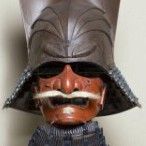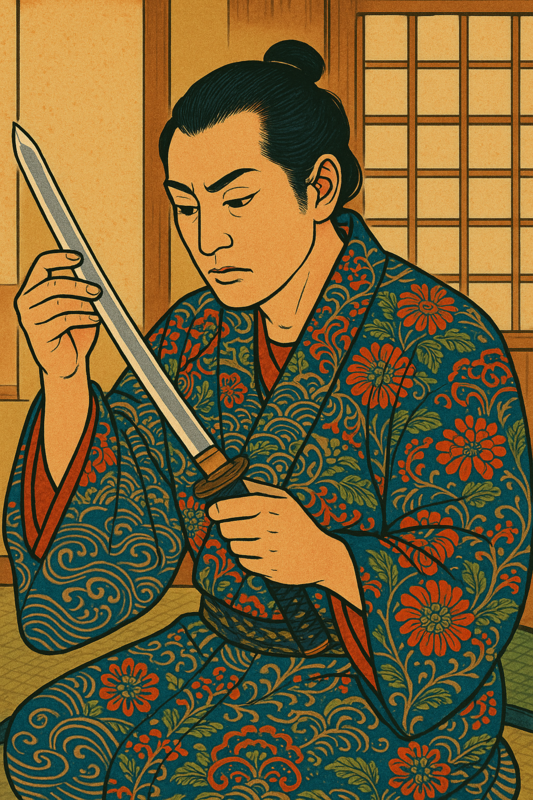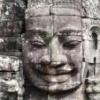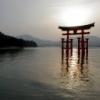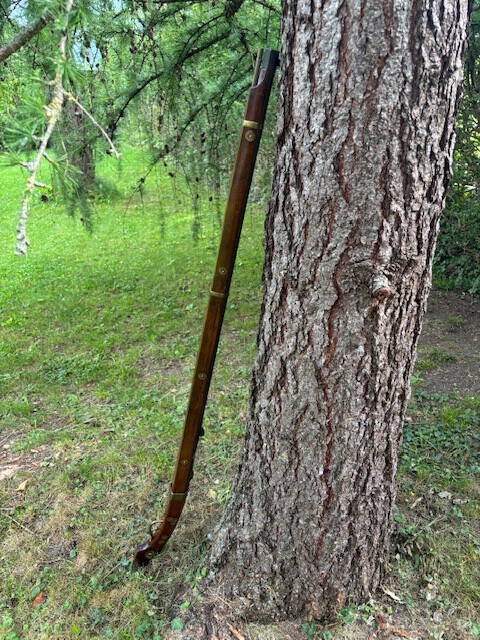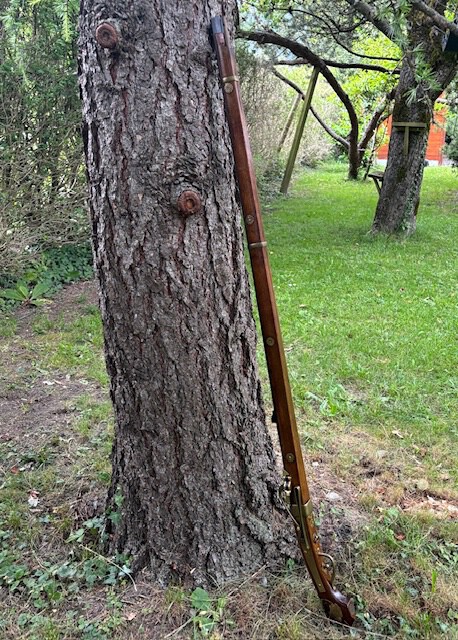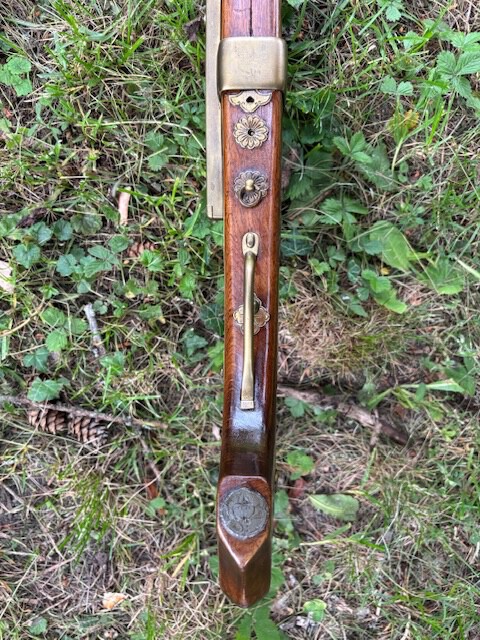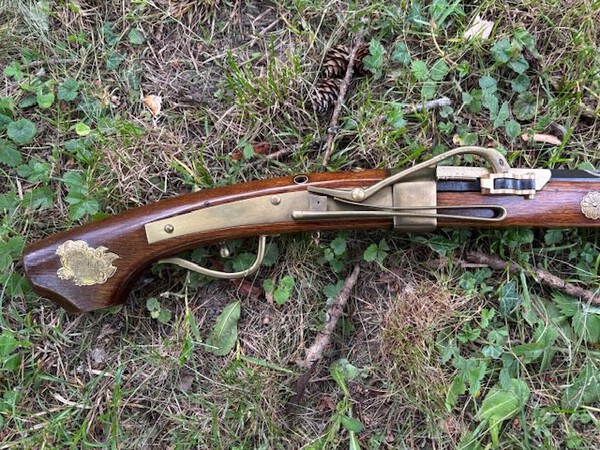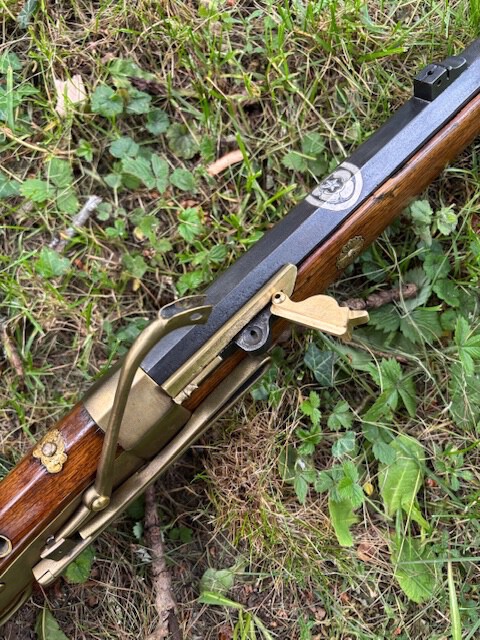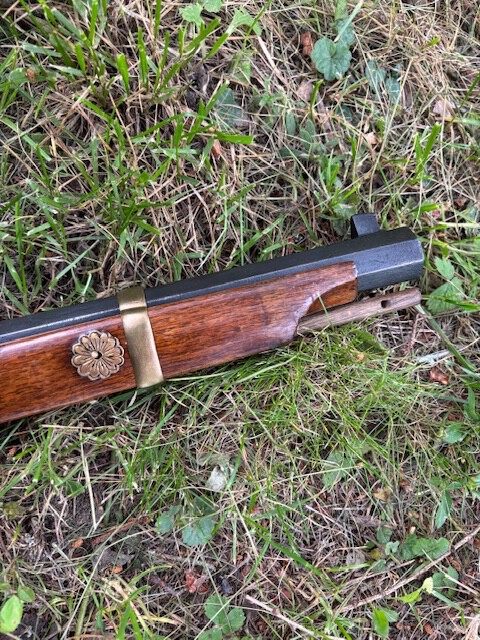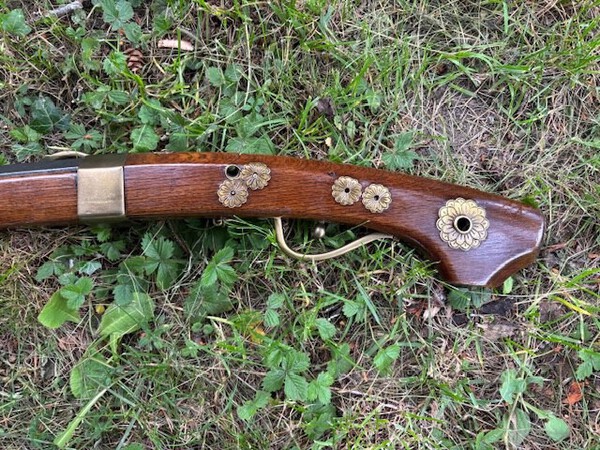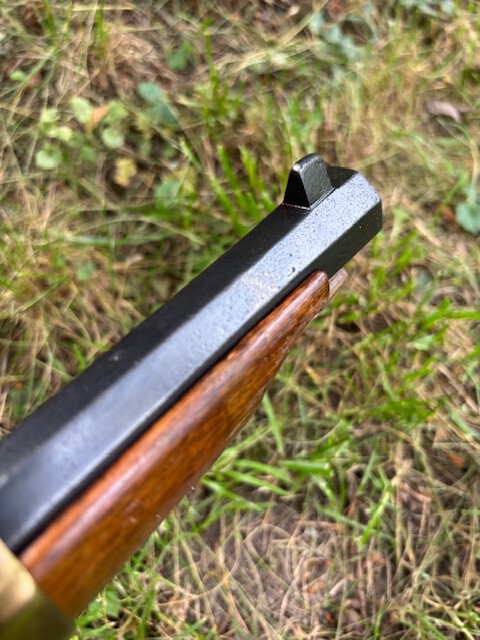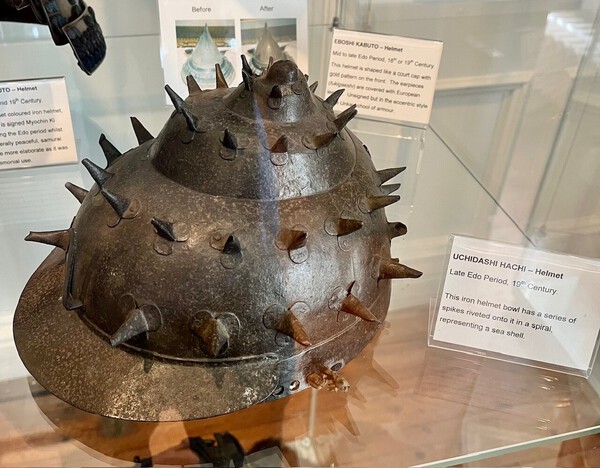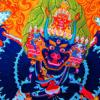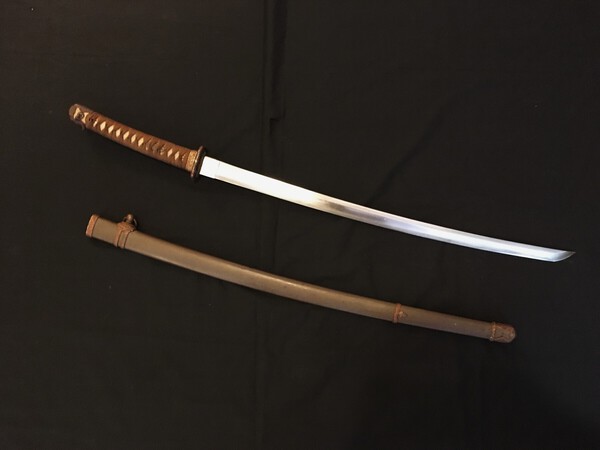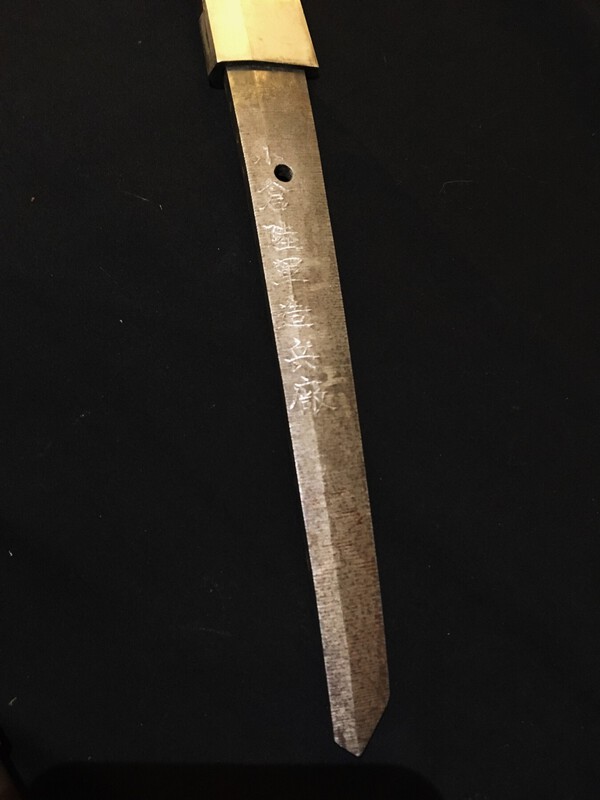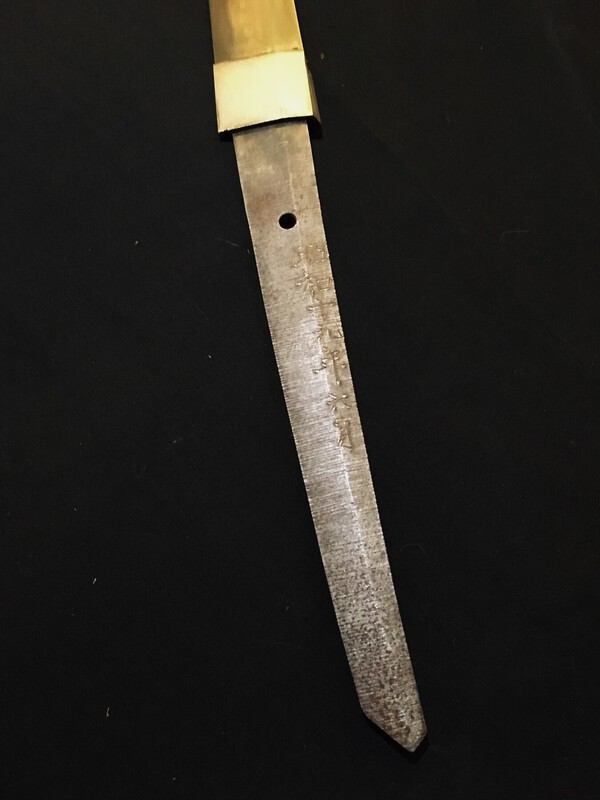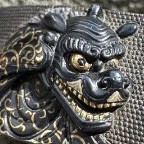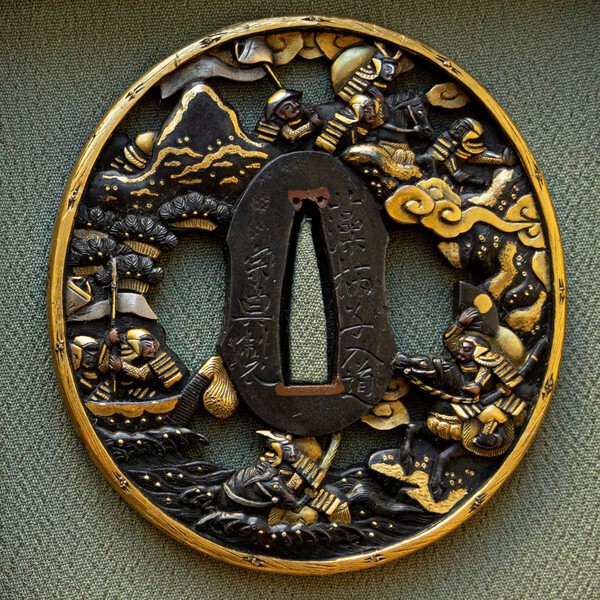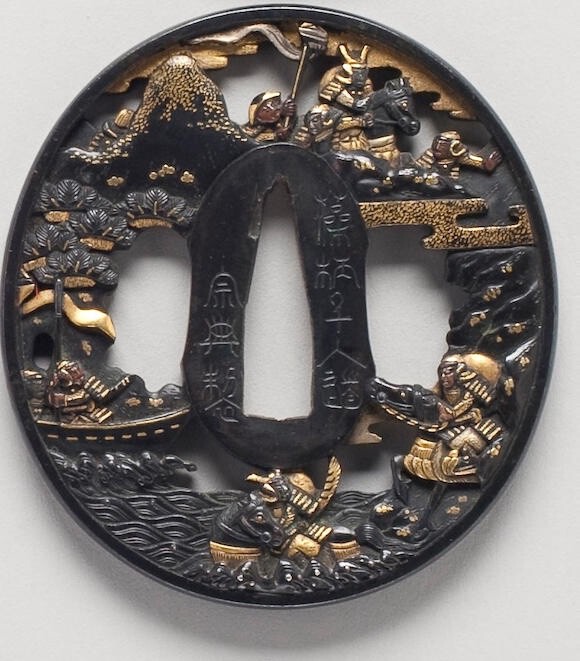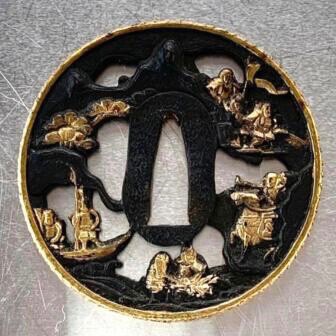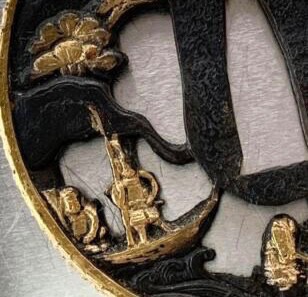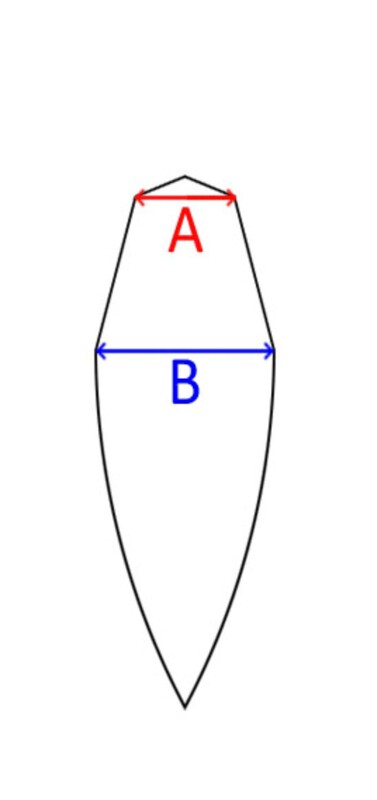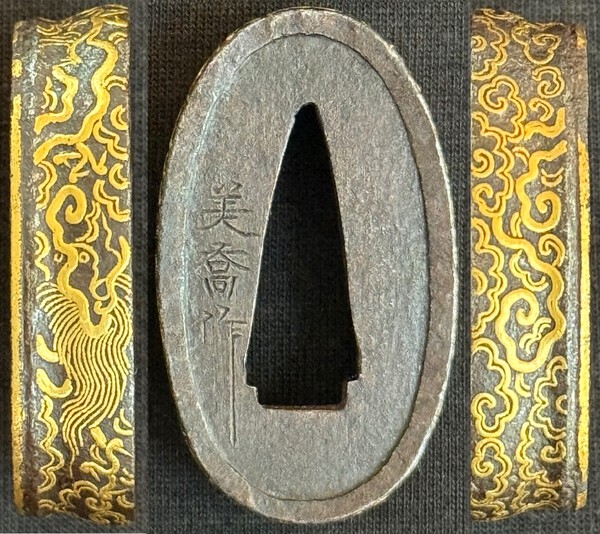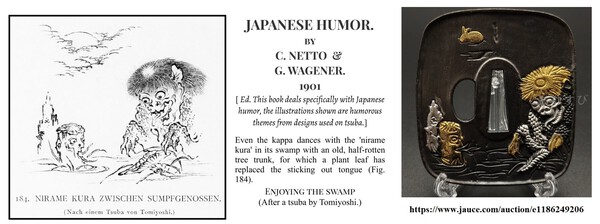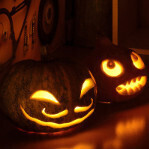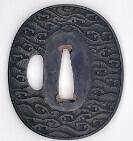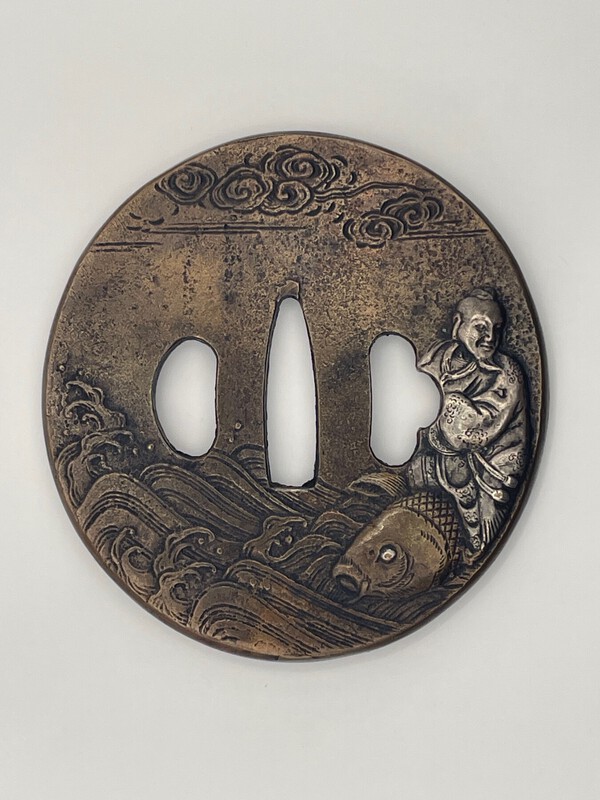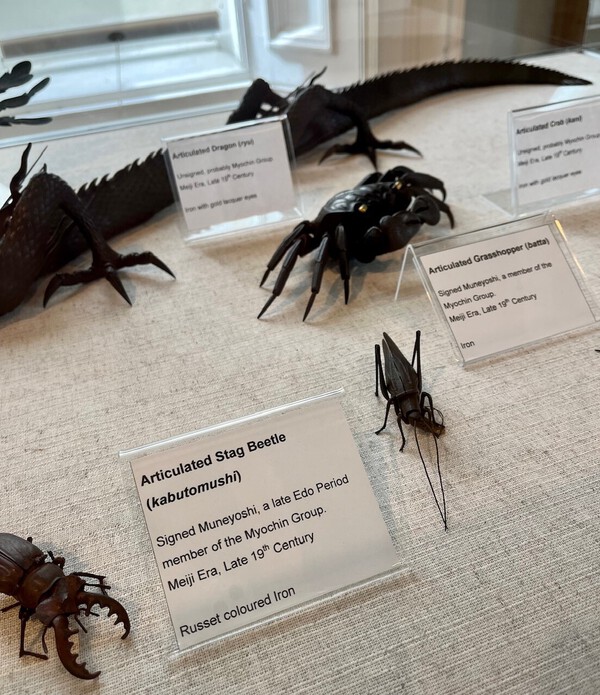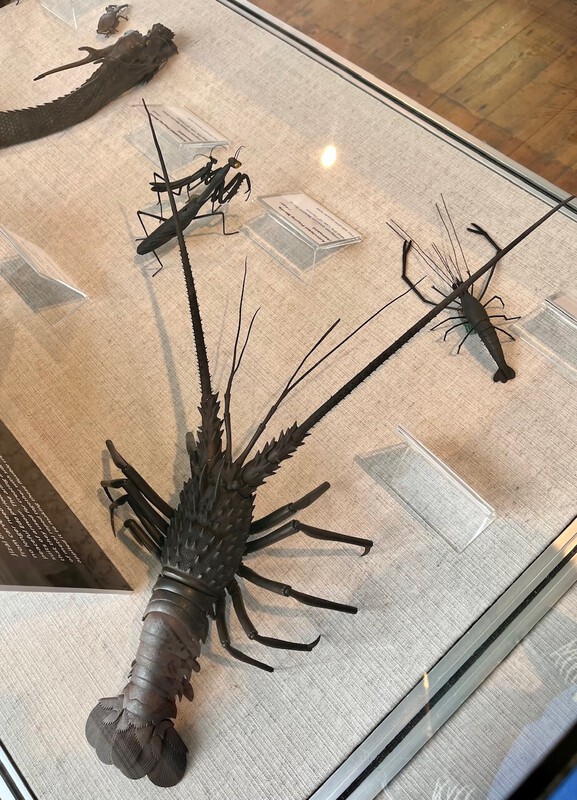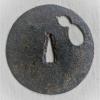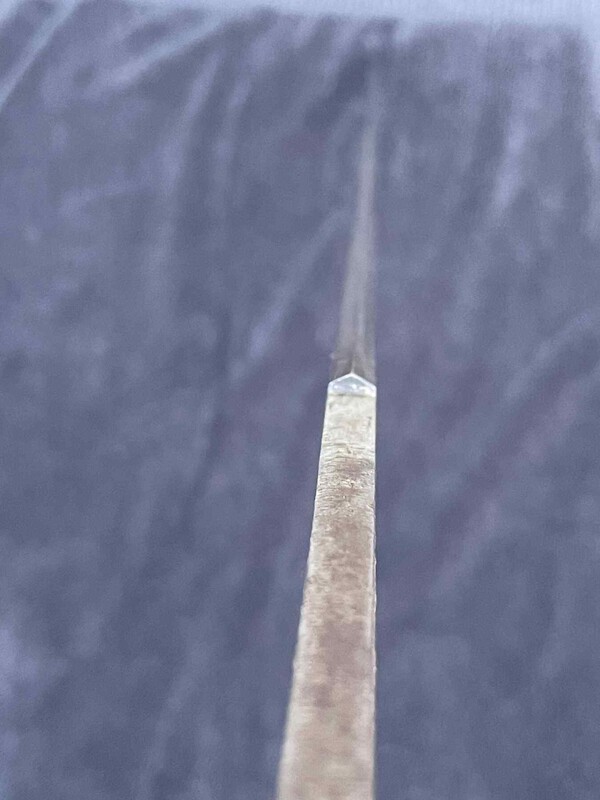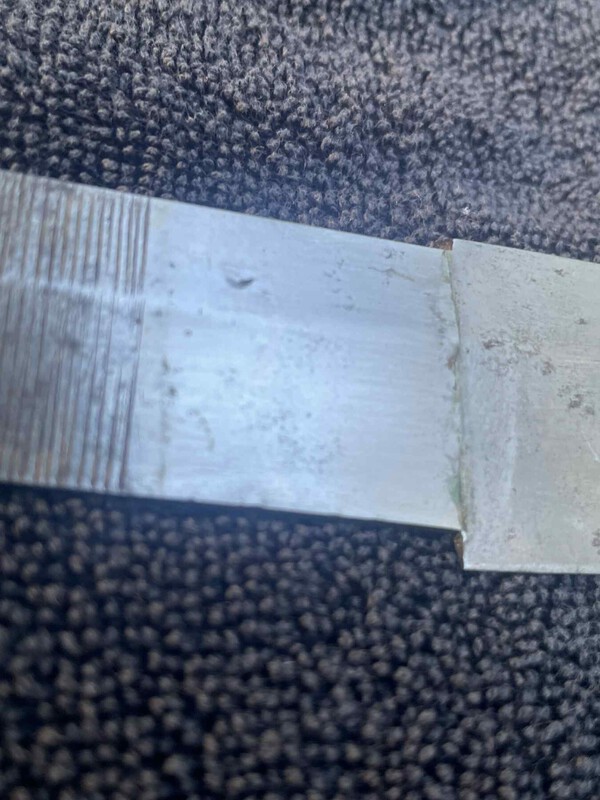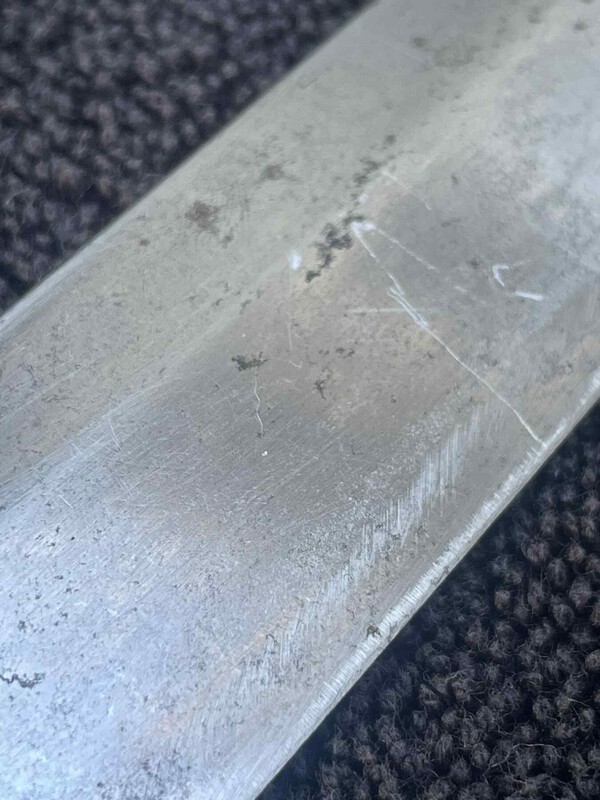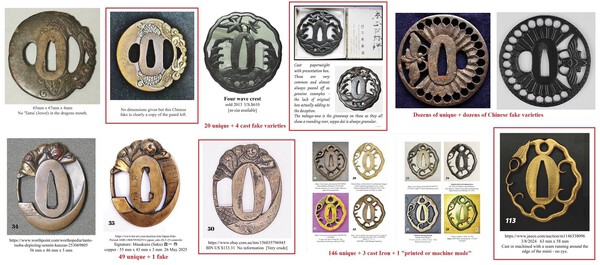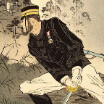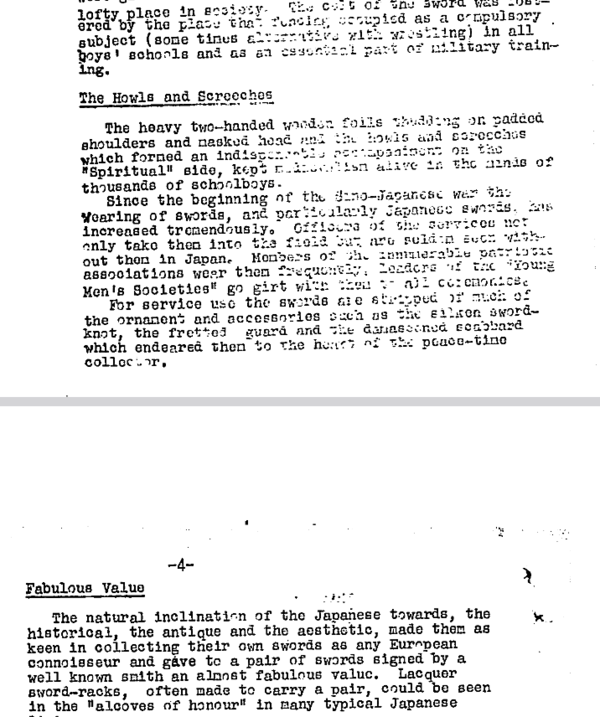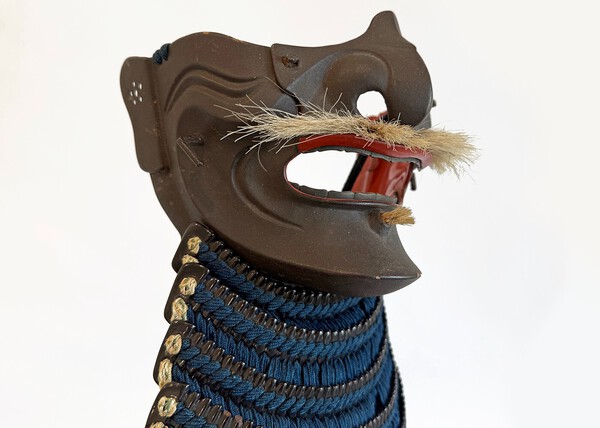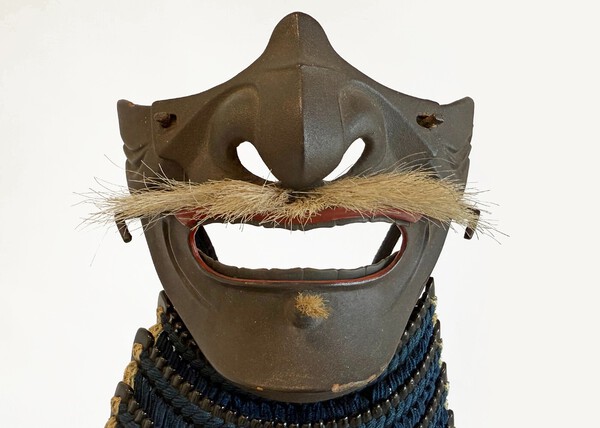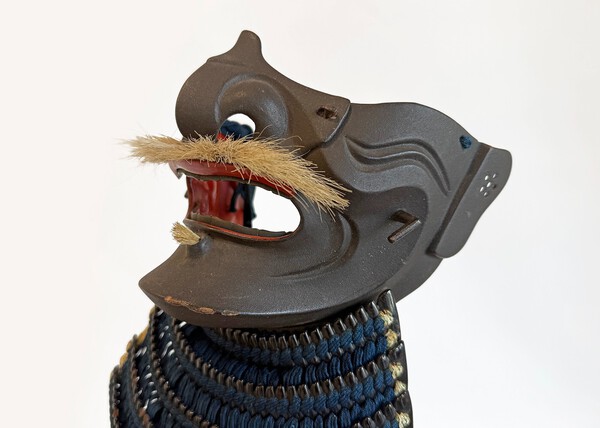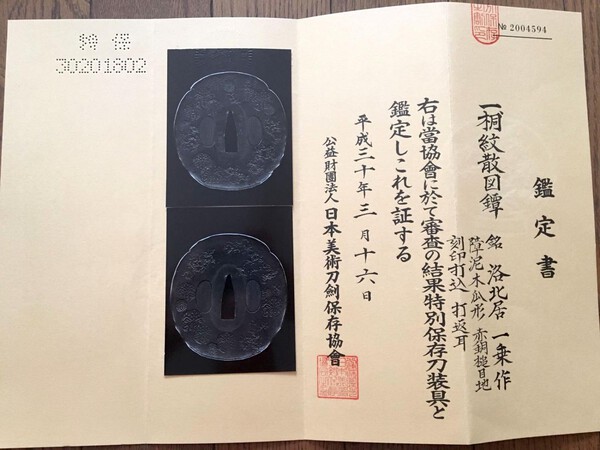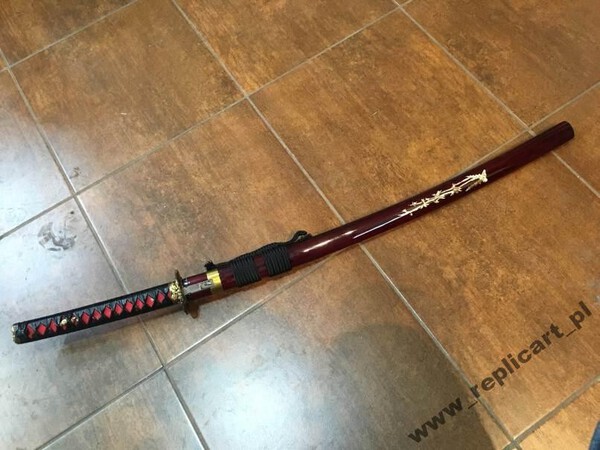Leaderboard
Popular Content
Showing content with the highest reputation on 06/01/2025 in all areas
-
Exciting News! We’re thrilled to announce that Markus Sesko—one of the world’s leading Nihonto scholars and authors—will be offering mei assessments at the Orlando Japanese Sword Show on Saturday, June 21st! Got a sword or tsuba with a signature you're unsure about? Wondering if it’s worth submitting for shinsa? Don’t risk your hard-earned money—Markus will be on hand to help separate the genuine from the gimei. 📅 Show Dates: Friday, June 20 through Sunday, June 22 📍 Just minutes from Orlando International Airport, with easy access to Florida’s top theme parks. This year’s show features: 40+ vendors with swords, fittings, and antiques for sale Demonstrations and workshops, including an immersive session on Japanese calligraphy, oshigata-making, and tsuka-maki Bonsai and ikebana displays Tsuba show & tell And now, mei checks by Markus! Markus will also give a special talk during our Yamashiro sword exhibition and will be happy to sign exhibition catalogs and copies of his books. So, whether you're a seasoned collector or just starting your Nihonto journey, there’s something for everyone. For more information about attending, booking a room, or reserving a table, please contact organizer Mark Ceskavich at: 📧 orlandoswordshow@yahoo.com NO FOMO! Don’t miss this incredible weekend. We look forward to seeing you in Orlando!4 points
-
3 points
-
Look in the downloads section. Darcy's excellent artice on photographing Nihonto is there. Best article on the subject anywhere.3 points
-
Folks, the project is 99.9% complete. I applied a few layers of cold blue to the barrel which has turned a very pleasing dark bluish grey, like a faded blue which fits the overall patina of the piece very well. During the process I discovered that there is a silver(?) bead on the rear of the front sight, which is a nice touch. The barrel is pinned with whittled down bamboo BBQ skewers. The lock is now also tuned to catch the cock safely and it snaps down gently but swiftly upon release. All I need to still do is source a new rod since the original snapped at some point and is missing about 3”. I may take a few shots with it eventually.2 points
-
Hi Piers, I I can’t remember what I had for lunch yesterday nor can I remember peoples names…..not even for 5 minutes but yes I do have an almost photographic memory for images and objects…..where I’ve seen them/similar before, if/where I bought them, who I sold them to, if they were in auctions, even if I simply liked something without handling it….the image will still “stick”. It’s a very strange thing to experience and I have no idea how or why it happens.2 points
-
2 points
-
Meantime, to kickstart this thread, here is a netsuke. It is quite representative of Netsuke in general, a little small perhaps, and the only reason I have chosen this one is that it is my latest find. (And I like it.) Unsigned, it is probably carved from 'tsuge' 柘植, 黄楊, 樿 etc., boxwood, for which there are various Kanji. Buxus microphylla var. Japonica. The carving is finely done, and the netsuke is a pleasure to hold in the hand. There are no added himotoshi holes, this netsuke taking advantage of the natural gaps between the stems of the mushroom branch through which to pass the strings. (Re Himotoshi. Himo 紐 means string/cord, and 通し toshi is part of the verb 通す tosu, to pass through. Short for himotoshi-ana, or 'string-threading holes'.) What would once have hung from this possibly seasonal Netsuke? Quite realistically carved, I can imagine that it might stimulate the taste buds of a Japanese person. Photos follow Can be enjoyed from any angle.2 points
-
2 points
-
I recently purchased an interesting Zoheito produced at Kokura Arsenal in May 1944. I’ve been researching it and studying it for the last week. It has some drastic drawbacks, but I also had some good, specific reasons to purchase it. I wrote this post to compile some information from several other posts and as a tool to help me get back into the study of this hobby. I. Zoheito Generally If you hadn’t heard of a Zoheito (like I hadn’t), a quick summary I liked was that a Zoheito is the commissioned officer equivalent to the Type 95 NCO Gunto: machine-made and arsenal-produced. However, references to them seem scarcer than I would’ve guessed: · Dawson page 68 shows a Type 19 Zoheisho-produced sword. However, the book doesn’t use the term “Zoheito”. · Plimpton doesn’t mention them at all that I could find. · The shorter Fuller and Gregory book doesn’t mention them either. · Ohmura, however, has a nice page on them: http://ohmura-study.net/206.html · And finally, there’s a great section in them on Malcolm Cox’s wonderful book on WWII swords from Fukuoka, Kokura Arsenal, and Kyushu: https://www.militaria.co.za/nmb/files/file/118-showa-period-swordsmiths-of-fukuoka-prefecture-kyushu-and-the-kokura-arsenal/ II. This Particular Sword This sword has been posted about several times on NMB: · https://www.militaria.co.za/nmb/topic/10853-mei-translation/ · https://www.militaria.co.za/nmb/topic/52349-sword-id-and-value/ · And actually, it’s even featured on page 116 of Cox’s WWII Fukuoka smiths book!! What’s interesting about this particular sword is the production quality. It seems like the vast majority of Zoheito are mumei, undated and only have a small acceptance mark and occasionally the Kokura stacked cannonballs. By contrast, this one has a very strong mei that reads: · Kokura Rikugun Zōheishō / 小倉 陸軍 造兵廠 = Kokura Army Arsenal, and · Showa ju kyu nen go gatsu / 昭和十九年五月 = Showa 19 (1944) May. The sword also has three stamps near the mune-machi: · KO - Kokura Army Arsenal Supervisory Section · HO - 1st Factory of Kokura Army Arsenal · 3 Furthermore, it has incredibly strong kiri yasurime along the length of the nakago. Back in 2016, these features led Mr. Chris Bowen to theorize to the previous owner (in this thread: https://www.militaria.co.za/nmb/topic/10853-mei-translation/ ) that the sword was actually Gendaito and made by Moritaka: http://www.jp-sword.com/files/blade/moritaka/moritaka.htm . I’m reaching out to Chris to ask if he has any follow-on thoughts or more details. It seems like there’s only been three similar swords reported to the NMB like this with a smith-style mei saying it’s Kokura Arsenal-made but no smith mei: · My sword · One made in February 1945 with the same style mei but with an RJT star stamp but no smith signature: https://www.militaria.co.za/nmb/topic/13623-kokuri-rigun-z%C5%8Dheis%C5%8D/#comment-142780 · Another December 1944 Kokura-produced Zoheito with the same style mei but without an RJT star stamp: https://www.militaria.co.za/nmb/topic/16353-interesting-late-44-gunto/ There are some other swords that have kanji indicating the sword was made at Kokura Arsenal but these are star stamped and signed by a smith: · Kasuga Seizōsho Fumitada, May 1945: https://www.militaria.co.za/nmb/topic/25118-gendaito-translation/ · Yoshinori made, May 1945: https://www.militaria.co.za/nmb/topic/4859-gunto-mei-help-please/ So my sword is interesting to me in that it seems like it has qualities of both Gendaito and Showato. After getting it in hand, I was hoping for a faint star stamp, but unfortunately none was present. As to the obvious flaws: the seller mentioned he inherited the sword from his father and he was unsure if it was his father who caused the damage to the sword with sandpaper or a prior owner. The father bought the sword in a 1970s flea market. But the damage is done, and the blade itself is very poor. However, the nakago and mei remain gorgeous and interesting in their own right. Why did I buy it? I’ve been majorly into Japanese firearms for the last four years and have amassed what I think is a nice collection of those (I’m the same username over on Gunboards if you’re interested). But Nihonto and Gunto are still very much things I enjoy, and I’m glad to have amassed a decent starter library to study and enjoy the swords I do own and think about future purchases. So when I saw a listing for the sword on a local firearms forum without photos, only about two hours drive from me, I was intrigued. I came to NMB to see if I could learn more based on the description and discovered it had been posted to the Trader section here for sale too, with photos. By the time I negotiated the price down, it was $300, and it came with some Type 95 fittings worth at least $100. Then my wife said she’d like to contribute $100 as an early Father’s Day present! Despite the poor polish, there were many qualities that sold it for me. First, I lived in Japan for a time and some of my happiest memories come from several months spent on Kyushu. As a result, in both swords and firearms, I very much enjoy Kokura-produced specimens. I intend to make my Nihonto collection into one focused on Kyushu-produced examples. My first Nihonto was a Bungoto: https://www.militaria.co.za/nmb/topic/36574-my-first-kantei-post-12-fujiwara-yukinaga-katana/ . The sugata and sori on this sword were pleasant to me, and I was intrigued by the mei and strong yasurime. So for being made at my favorite arsenal, the unique signature, a book-published sword, and for a net-$100 ($300 sword - $100 wife’s contribution - $100 Type 95 fittings), I couldn’t resist. III. Kantei Don’t laugh, please. I recognize this is a somewhat silly exercise to do on a beat up Showato, but I wanted to re-familiarize myself with the following terms and go through the exercise. I was only ever a novice to begin with, and it’s been four years since I’ve bought anything Nihonto-related. The knowledge here (on the specific meaning of the terms in particular) is definitely a perishable skill. I used the NMB Kantei sheet located here: http://www.militaria.co.za/articles/Kantei_Sheet.pdf . The measurements are in inches. Brief Overall Description: Zoheito made at Kokura Arsenal in May 1944. Shirasaya length: N/A. Overall length: 34 3/8. Nagasa lengh: 25 6/8. Nakago length: 8 5/8. Kasane: 1/4. Mekugiana: 1. Mihaba: 1 1/2. Motohaba:1 1/4. Sakihaba: 13/16. Motokasane: 1/4. Weight: 2 lbs 0 oz. Sugata shape: Shobu-zukuri – See my questions below. There is no yokote visible, and I wonder if that’s intentional or due to the rough handling this sword has had. Hada: Very difficult to determine with the scratches. Perhaps muhi-hada or maybe masame-hada. Sori: 7/16; Type: Torii-zori. Kissaki: Chu-kissaki. Mune: Iori-mune. Hamon: None visible. Yakiba: None visible. Boshi: None visible. Nakago: Ubu; Nakagojiri: Kengyo but close to Iriyama-gata. Yasurime: Kiri (and incredibly strong too). Bohi: None. (I’m still trying to get “No-Hi” as a term to catch on ) Koshirae: None. Polish: Very poor. The blade has been the victim of some sanding along the edges and has scratches throughout. Period: Gendaito. School: N/A. Origami: None. IV. Questions. 1. Showato or a Gendaito? - My gut says Showato due to the lack of an RJT star-stamp. However, since other examples exist that lack a smith’s signature but do have a star-stamp, maybe this one just missed getting its star. I’d love that to be the case, but I worry that’s just wishful thinking. I’d love your take on it. The polish is bad enough that it’s probably impossible to tell in its current state. I can’t even really make out the jihada. What do you think? 2. No yokote? - Interesting to me to see that there’s no visible yokote. Does the shape of the sword look like that’s intentional? That’s my take. Or could it have been sanded/ground off? 3. Buying koshirae and habaki? – I’m wondering if trying to find a koshirae (or at least a tsuba and tsuka) is a fool’s errand. What’s your best recommendation for trying to match up fittings? I don’t want to sink too much more money into it, but it would be nice to at least have a proper tsuka on here for handling/display. If you stuck around this long, thanks for reading! If nothing else, this sword was a great way to get me hooked back into the hobby at a cheap price and start reading and engaging here again. I’d love any thoughts you have about the sword, process, or write-up. PS - More photos to follow shortly as I jigger with the size limits.1 point
-
1 point
-
Hi Piers, This reminds me very much of the work produced in Ise Yamada by the Masanao school….mid 19thC ish? or perhaps….. https://www.bonhams.com/auction/24456/lot/166/a-boxwood-netsuke-of-mushrooms-by-juko-toshimitsu-19th-century/1 point
-
I messaged Chris Bowen, and he was kind enough to reply with additional information about his thoughts on the sword. He said that he never gives attributions when “there is nothing visible in the blade. The yasuri-me, style of nakago, and mei are all similar to Moritaka and I would suspect that he was involved in some fashion. I would suggest finding out more about Moritaka and who else worked/trained at the Kokura Arsenal; look for post war smiths as well who were trained my Moritaka. The work style is close so if it wasn't Moritaka it was likely a student.” He encouraged me to study Moritaka swords, as Moritaka was “someone with similar workmanship who also contributed to the Kokura arsenal and thus was a good starting point to research further.” He believes the sword to not be a “shobu-zukuri blade, but rather a shinogi-zukuri blade that has been abused and lost its yokote.” That’s a question I had too, so it’s nice to get an evaluation from an expert. He said that in the current polish, it was impossible to determine if the sword was showata or gendaito. I tend to agree. He mentioned sending it to a togishi to polish a window. The thought intrigues me, but I also know that polishing would be very expensive. I wonder how much a window would cost and if a quality togishi exists in the States. I worry about sending the sword overseas; if it proves to be showato, isn’t that something that can have the sword confiscated and destroyed? Does anyone have experience with getting a State-side window done? Regardless of the cost, I anticipate holding onto this sword for decades, so maybe at some point in the future it would be an option. In the meantime, a hearty thank you to Chris for the follow-on information.1 point
-
Thanks, @Bruce Pennington! I've devoted more of my fun money to guns than swords over the last few years, and at the very low price for this piece, I figured the research opportunity and history and condition of the mei/nakago generally made for a good purchase. I saw that edge along the machi too and wondered. The sword was previously fitted with a really bad habaki which was too narrow. I wonder if that line is a scratch that occurred from that ill-fitting habaki.1 point
-
1 point
-
1 point
-
1 point
-
1 point
-
The tsuba is signed “Yoshitaka saku” - I think this is referring to Komai Yoshitaka (駒井美雄) , oldest of three sons of Komai Seibei (駒井清兵衛) who founded the Komai school in 1841. Yoshitaka was born the same year. The Komai brand later became famous for making overlayed cigarette cases, decorative boxes and similar works. Signature examples (the second is not to my knowledge authenticated, but I believe it): More info on the famous “S. Komai” school and its origins - http://www.smokingsamurai.com/KOMAI_S.html1 point
-
廣 Hiro… for the first character, I reckon.(?) PS Thanks for all the extra pics. It definitely helps!1 point
-
A little off topic as these are not difficult to tell what they really are, compared to other reproductions ment to deceive. Yet another aspect to consider is when fake/copied tsuba are themselves then faked. https://www.jauce.com/auction/1186920457 A brand new fake following on the success of these fakes. https://www.ebay.com/itm/196883702824 It is easy to see why when the "new" fake is so much cheaper than the "old" fake, the incentive is to undercut the other seller! Some time back Paul Chen Hanwei produced a set of "famous figures" tsuba for his swords - I think it was a matter of weeks before all his designs were being copied. What a minefield for new collectors when you can't even trust a fake to be a real fake! This aside: Japanese humor turned into a joke! Please note the cloud from the original design has somehow become a rabbit in the trashy fake. Tomiyoshi would not be amused! https://www.jauce.com/auction/e1186249206 The cloud came back in this one!1 point
-
Noda Masaaki (1784-1821), late edo. I agree, the works come from different schools, but the main theme is common and quite interesting.1 point
-
Jean, yes of course the work of apprentices in ateliers must be acknowledged as reflecting the original style and standard designs/composition of and supervised/authorized production by the master. For me as an active modern day collector, the interest is in relation to: 1) what reproductions of any kind and intention tell us about which original and iconic tsuba designs and artistic/material production features are of relatively broad appreciation (can give some indication of the historical value of genuine pieces); and 2) what should we be particularly aware of regarding contemporary fakes posing as genuine antiques. I’m less interested in the plethora of Edo period reproductions and fakes such as of Nobuie and Yamakichibei with poorly executed mei. These should be well-known to collectors, although I am surprised by how often such tsuba are being offered for $300 by seemingly reputable dealers without any other comment except "...with mei of Nobuie," which is technically not fraud, but nonetheless feels dishonest towards those less experienced collectors.1 point
-
Thank you Bruce! Yeah, that's a great feeling. Used to have such feelings back then when I was working in my workshop on my projects. Also I like the process itself. I have some skills and I am used to working with metals. And even as these skills are far from Japanese edged weapons, they serve me right especially when it comes to the "what not to do" area. :-) Also my son was always very interested in history, especially during the Great War period. His specific interest is the Austro-Hungarian Empire. So we started to collect belt buckles and kappenabzeichen-s (cap badges). And as the Eastern Front went right through Ukraine one could find some WWI relics here. When it comes to belt buckles that are present on local auctions, they are usually metal detected and dug on the sites of battlefields. So most of them are bent and corroded. Not long before the war I started to buy them and experiment with restoration. I worked out my methods. I cast lead weights of different configurations and used them for hammers, while rubber plates served me for anvil. In this way I straightened brass buckles without scratching them. I learned a bit about how to clean brass and how corrosion eats it. I believe I got a bit of understanding of what to do and what is more important - what not to do with old brass.1 point
-
1 point
-
Thank You Brian and Piers. It appears I have been mostly mistaken for thinking that there were additional, small sight pieces that attached to the front and/or rear fixed sights on the barrels. At least not in common use. So, I stand corrected. What made me think there were additional sight pieces was the sight "picture" you get while aiming the gun. Nothing like the picture you get with "Western" muskets, even during the original European matchlock period. On my gun, the front sight looks like #2 and the rear sight looks like #1 in the above sketch. So, I guess the idea was to line up the two very thin vertical groves of both sights for aiming. In any case, thanks for the enlightenment. Very much appreciate it. I'll take some photos of the sights on my gun and post here. Rick1 point
-
short update, as i mentioned earlier, i started making shachi. the tail for now, the body is already in the plans. but the head, hmm, i'm a bit afraid of that s6.mp41 point
-
1 point
-
By the way, do you know how old this piece is? The link is not working for me.1 point
-
Steve, with modern technology, almost any TSUBA could be reproduced, but of course simple designs are the favourites. TSUBA with inlay are copied rarely. Older casting technology (lost form) would not work with undercuts, so OMORI TSUBA are too difficult. Also, very fine details as in KYO SUKASHI are not so easy to replicate. It is a special market, and cheap copies (not UTSUSHI !) are mostly made for tourists or for those collectors who are not experienced or sensitive enough to see the differences.1 point
-
@Kiipu, like @Nihonto Chicken, I’m checking in (even later!). I just bought the sword from @md02geist and wrote up a lengthy post about it here: https://www.militaria.co.za/nmb/topic/52642-an-interesting-if-troubled-zoheito/ . Unfortunately, there’s no star stamp on either side of the nakago. The mystery continues. And to @mecox, thank you for your absolutely wonderful book on the Fukuoka smiths. You featured my new sword's mei on page 116 and that helped push me over the edge to buy it. If you want additional photos for a subsequent edition, check out the link above or please reach out. I'd be more than happy to take any photos you want. Seriously, can't say thank you enough for your research; it's a fantastic work.1 point
-
1 point
-
1 point
-
1 point
-
Where do you start? If there is a published image of a tsuba - it has been faked! I know even a guard made by the late Ford Hallam was faked in his own lifetime - nothing is safe when countries don't have copyright rules. https://jp.mercari.com/item/m44209917420 https://www.jauce.com/auction/d11869329901 point
-
1 point
-
1 point
-
As previously mentioned, the final result will often reveal the quality of the shakudo. It may also show the ability and skill of the restorer who may have to spend considerable amounts of time trying to come up with just the right formula to achieve the desired result. And even then, nothing is assured as the alloys used in production were simply subpar.1 point
-
1 point
-
Interesting that the writer mistook the samurai's waki to be for suicide. Also interesting that they made a point to lay out the argument that swords collected after the war's end were to be distributed among all. There must have been some front-line guys grumbling about office clerks getting swords!1 point
-
1 point
-
1 point
-
1 point
-
0 points
-
0 points
-
Yeah.... I've always struggled with why people buy the one with the guy looking like a drunk Dionysus.0 points
This leaderboard is set to Johannesburg/GMT+02:00

